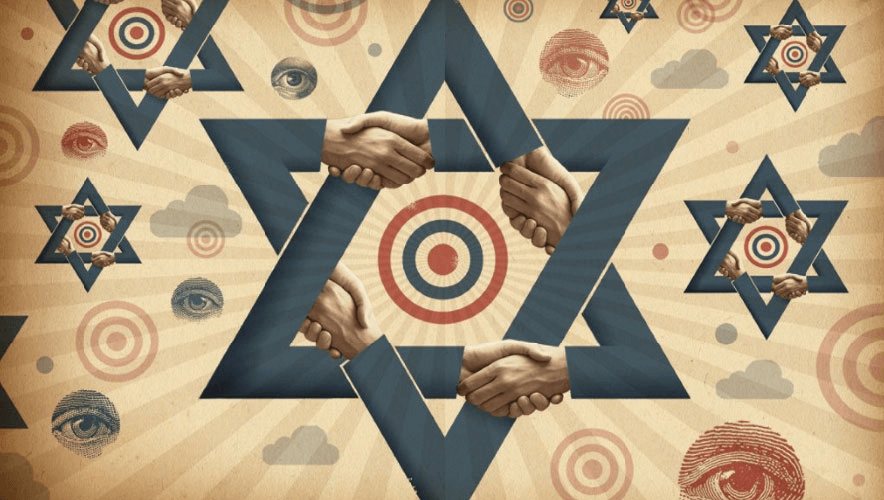Communal Protection
Domestic terror attack targets are usually not chosen at random, and some populations are targeted more than others. Of all religious groups, Jews continue to be the most targeted in the United States, according to the findings of a new report.
The report, Terrorist Incidents and Attacks Against Jews and Israelis in the United States, 1969-2016, examines the FBI’s annual hate crimes report for the years under study. For example, in 2015, 1,354 hate crimes were recorded in the report. Of those, 695 incidents, or 51 percent, targeted Jews. “This is a consistent finding of the FBI report over many years,” writes the report’s author, counterterrorism expert Yehudit Barsky.
Going deeper, the report catalogs 104 incidents in 2015 to better characterize the attacks. The majority, 51 percent, targeted synagogues, followed by community institutions (14 percent), Jewish persons (13 percent), and educational institutions (10 percent). In terms of means of attack, arson, shootings, and explosive devices were used in about equal frequency.
Year-over-year, the total number of attacks has been declining, but they have been increasing in severity. “Recent incidents have been increasingly lethal and have…claimed many more victims,” Barsky writes.
And the threat has been revived several times in the last few years. In October 2015, the Islamic State (ISIS) militant group directed its followers worldwide to kill Jews. ISIS’ Al-Masra Foundation issued a video, The Slaughter of the Jews, which called for followers to “Stab the Jew with a knife or run over him with a car; poison him; bring back explosives, the [use of] explosive belts and IEDs; burn their faces and their houses.”
Then in 2016, ISIS published an article in its Al-Naba publication that called for followers to help Palestinian Muslims by fighting Jews around the world: “killing them, destroying their property, and harming their interests in any way they can.”
The report also includes some lessons learned and related recommendations for future security. Jewish targets sometimes serve as precursors to larger attacks. The perpetrators of the 1993 World Trade Center bombing, for example, were previously involved in anti-Jewish attacks.
And in many of the incidents, the attackers conducted preoperational surveillance. For example, in 2014, neo-Nazi Frazier Glenn Miller carried out preoperational surveillance at two Jewish organizations that he later attacked.
“This phase of a typical attack cycle is the most likely point for detection, and thus recognizing it can avert or minimize an impending attack,” Barsky writes. “Training and engagement of community members is thus essential.”
While the U.S. Department of Homeland Security announced that it would step up efforts to support Jewish communities, others are working at the grassroots.
For example, the concept of the training and engagement of community members is at the heart of operations at Community Security Service (CSS), the nonprofit group that sponsored the report and whose mission is the protection of the people, institutions, and events of the American Jewish community. CSS started in 2007 with a small group of volunteers. It now has more than 3,500.
“The differentiator is—it is an entirely volunteer organization,” says Don Aviv, CPP, PCI, PSP, who is COO and director of physical security at Interfor International and a founding member of CSS. Aviv is also vice chairman of the ASIS International Security Services Council.
CSS serves as a security partner for various Jewish institutions and events, ranging from the National Menorah lighting in Washington, D.C., to an annual sit-down dinner of roughly 6,000 rabbis held in conjunction with a religious conference in Brooklyn. CSS also helps protect smaller events such as weekly services and Shabbat dinners across the country, according to Jason Friedman, the executive director of CSS, who is also an attorney and U.S. Navy officer.
The founding philosophy of CSS is that security should be rooted within the community. “The idea was, no one can protect your community better than yourself,” Aviv says. And so volunteers from the community are trained in the basics of security, including practices such as recognizing threats and devising a system to report threats or other incidents.
The training includes aspects like scenario-based exercises and helping volunteers maintain a higher level of security awareness by checking their surroundings daily. An important component is helping volunteers develop a level of comfort with being part of the security effort. “It comes down to motivating the individual member to be a part of their community” in an “empowering and enfranchising” way, Aviv says.
Community members are treated as partners in security to be worked with, not as people to be ordered around by those leading the security effort. “We don’t enter into a community without being invited. We’re not forcing our way in,” Aviv explains.
The other key aspect of CSS’s model is that security is achieved through a partnership among community members and volunteers, contract security, and law enforcement. This is accomplished through training and by building up a framework of interaction for all stakeholders.
For example, community members are advised that, if they decide to use contract security, they should not just hire security officers and then walk away and expect them to take care of everything: “You’re putting too many expectations on their shoulders,” Friedman says. Instead, by working with them, the community will receive a better return on its investment.
Similarly, volunteers embedded in the community will communicate with law enforcement officers, so that the officers know the community’s concerns and issues and do not have to “parachute in” blindly. “We’re a force multiplier for federal and local law enforcement,” Aviv says.
While CSS is dedicated to protecting the Jewish community, its cooperative community-based model of security is replicable for use by other populations as well, Aviv says. “At the end of the day, the threats facing us are similar to those facing other groups,” he says.
